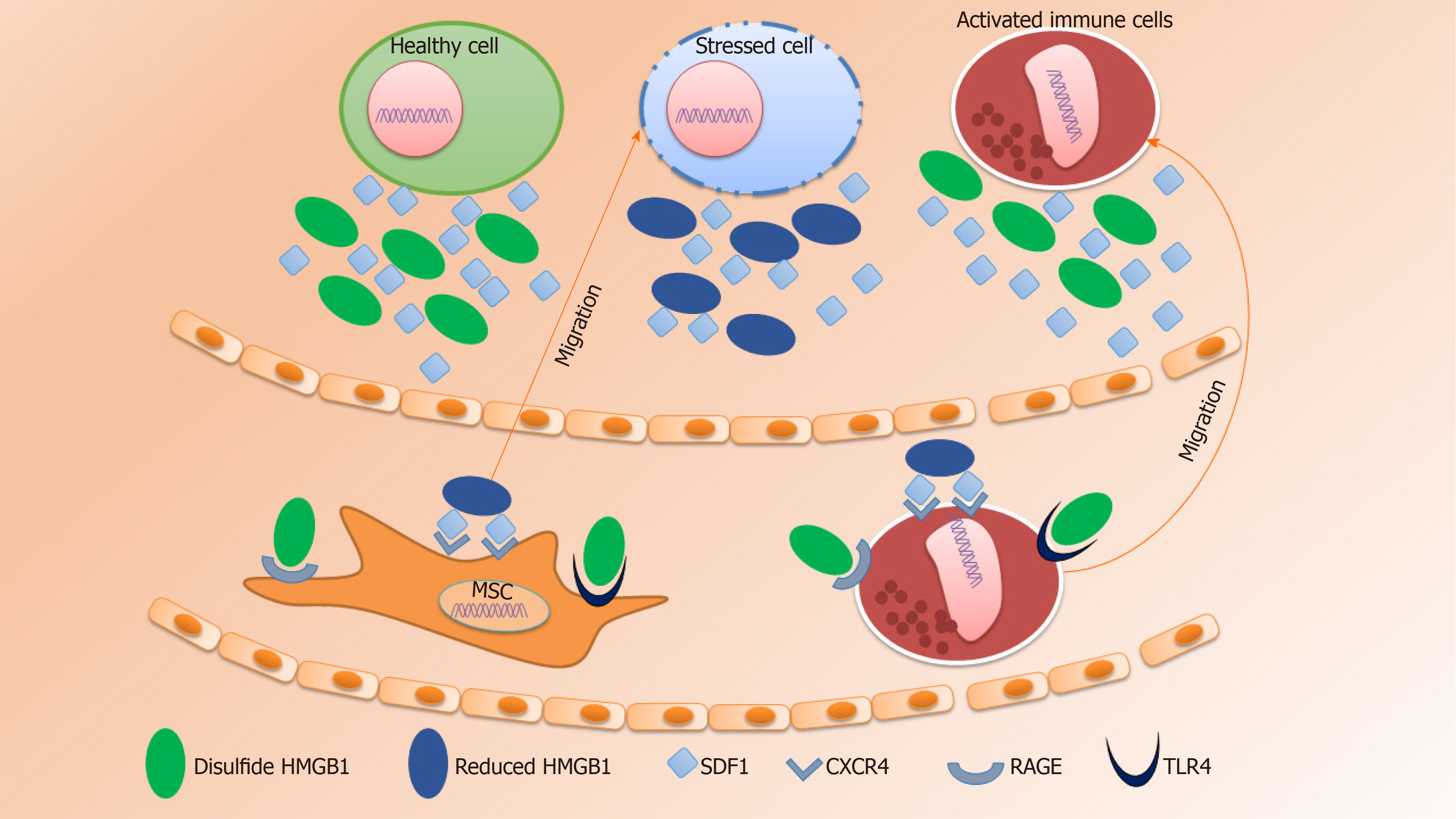Copyright
©The Author(s) 2020.
World J Stem Cells. Sep 26, 2020; 12(9): 938-951
Published online Sep 26, 2020. doi: 10.4252/wjsc.v12.i9.938
Published online Sep 26, 2020. doi: 10.4252/wjsc.v12.i9.938
Figure 1 Schematic diagram of the dynamic HMGB1–CXCL12–SDF1 axis for accelerated tissue regeneration.
Disulfide (oxidized) HMGB1 usually binds to RAGE and TLR and regulates the expression of genes with pro- or anti-inflammatory properties and partial chemotactic properties. Whereas, fully reduced HMGB1 released from necrotic or stressed cells forms a heterocomplex with SDF1 secreted from activated immune cells or from cells within the injured tissues. Later, this heterocomplex binds to the CXCR4 receptors on the cells and facilitates site-specific migration[123-125]. MSC: Mesenchymal stem cells.
- Citation: Haque N, Fareez IM, Fong LF, Mandal C, Abu Kasim NH, Kacharaju KR, Soesilawati P. Role of the CXCR4-SDF1-HMGB1 pathway in the directional migration of cells and regeneration of affected organs. World J Stem Cells 2020; 12(9): 938-951
- URL: https://www.wjgnet.com/1948-0210/full/v12/i9/938.htm
- DOI: https://dx.doi.org/10.4252/wjsc.v12.i9.938









